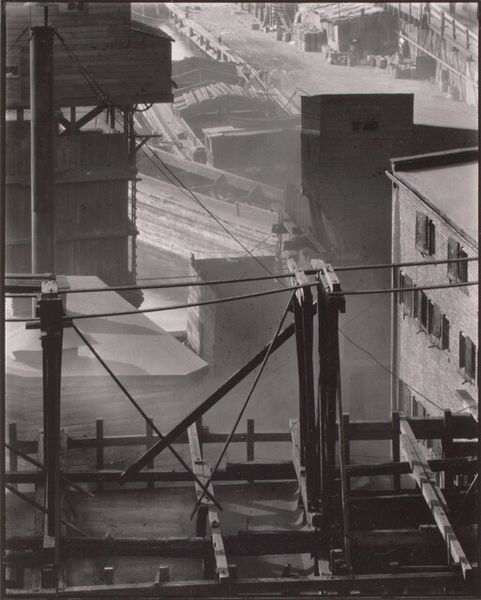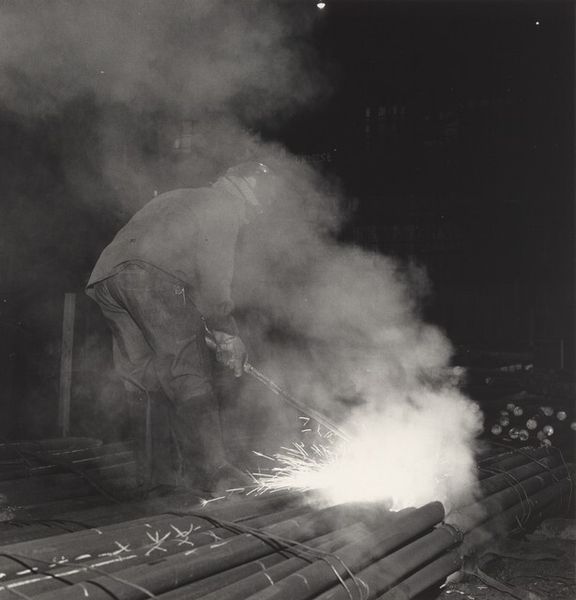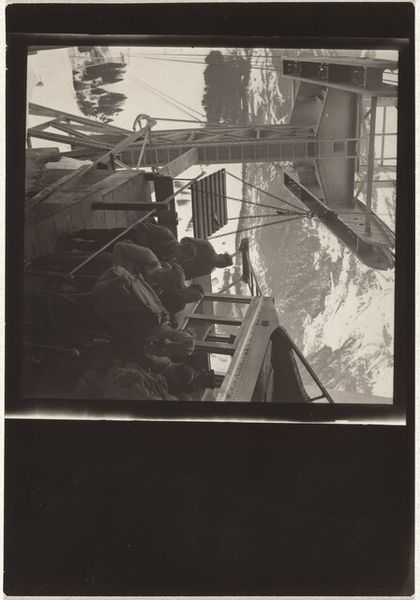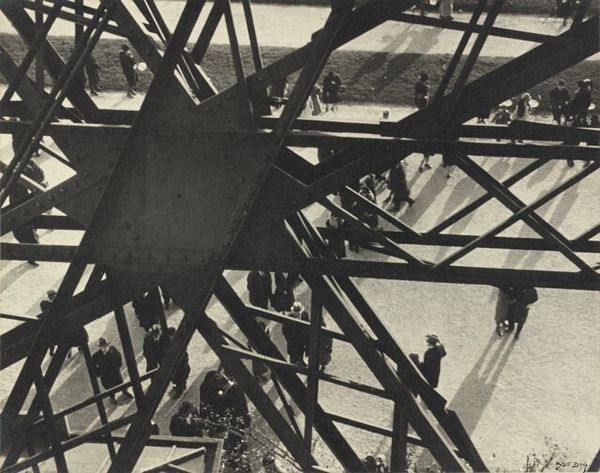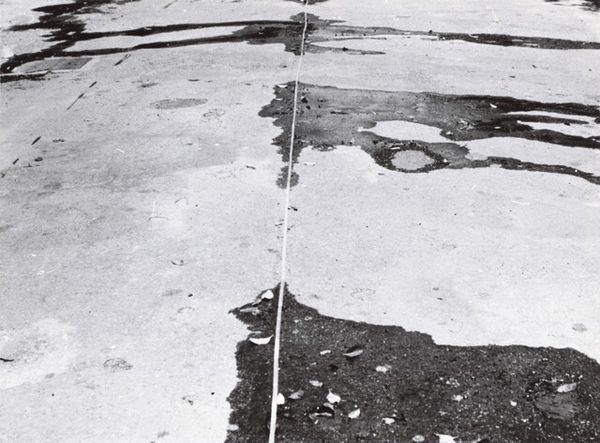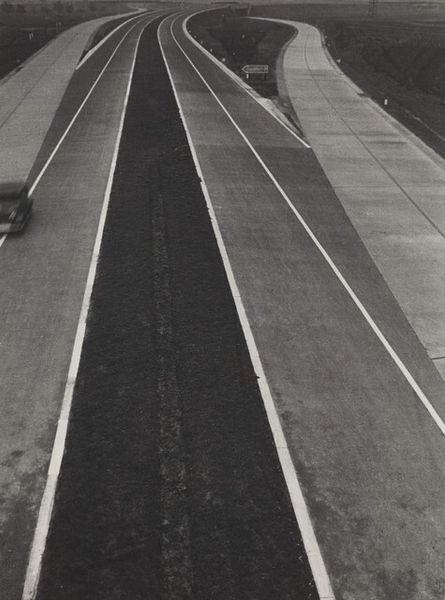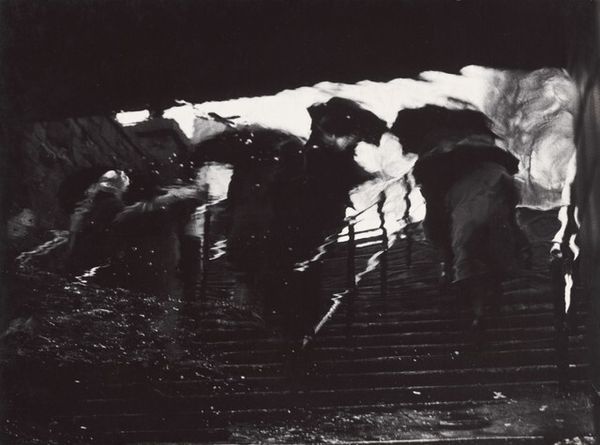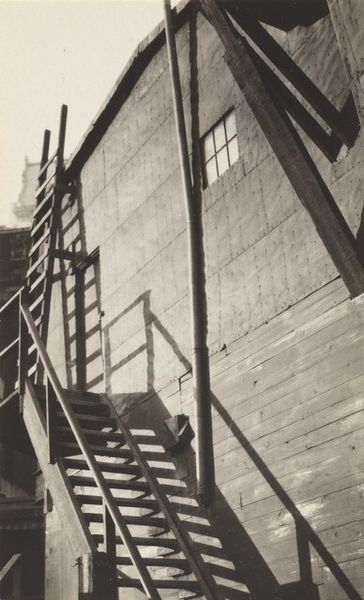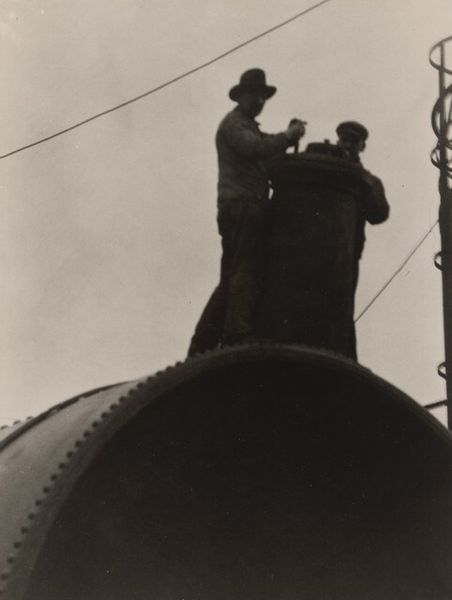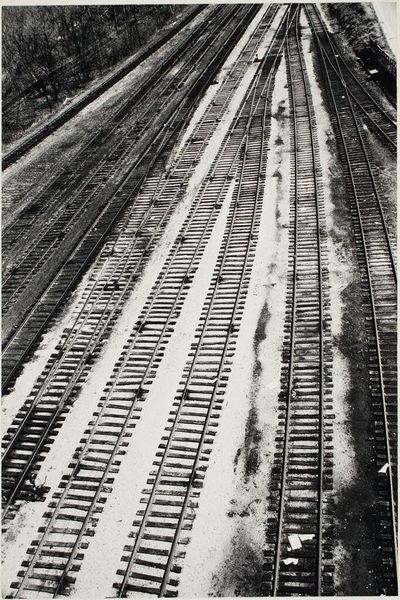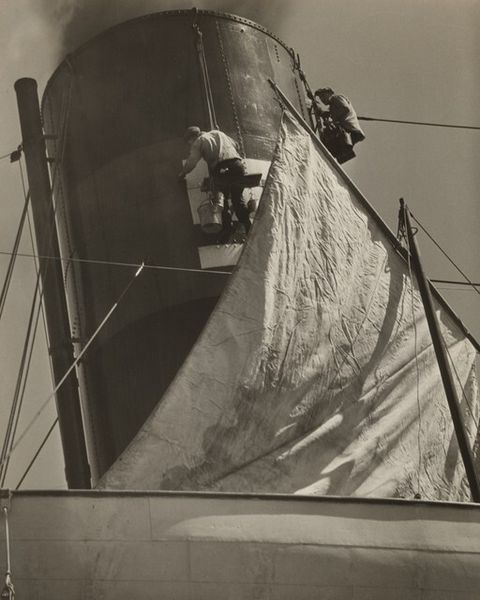
photography, gelatin-silver-print
#
photography
#
black and white
#
gelatin-silver-print
#
monochrome photography
#
ashcan-school
#
cityscape
#
monochrome
#
realism
#
monochrome
Dimensions: image: 27.94 × 21.27 cm (11 × 8 3/8 in.) sheet: 28.1 × 21.59 cm (11 1/16 × 8 1/2 in.)
Copyright: National Gallery of Art: CC0 1.0
Curator: There's a certain starkness that immediately grabs you, wouldn't you agree? All those converging lines… Editor: Absolutely. They pull you in, almost like the tracks are dictating your gaze. This is Nathan Lerner's "Roundhouse" from 1936, a gelatin silver print. What I find so compelling is the way he frames this industrial space. It’s simultaneously isolating and teeming with potential energy. Curator: Exactly! The roundhouse itself is almost an absence. It’s what all those lines are pointing *towards*, a kind of negative space, you know? The overall feeling for me is like a suspended moment. A melancholic snapshot in time. I also can not help but appreciate that strange looming machinery down in the corner—makes the space even more uncanny somehow, right? Editor: That machinery does complicate it. I read the shadows cutting through the frame as a visual manifestation of the era’s economic precarity. This image emerges during the Depression, a time of immense social upheaval. The rail yard, a nexus of industry, embodies both promise and the anxiety of labor. Look at the two men walking along the rails, their very existence seems fragile given the enormity and force of the machines surrounding them. Curator: Mmm, yes! And the lack of horizon really throws you. You’re both grounded and floating, lost in a pattern… a pattern leading who-knows-where. To me, the photograph is more an abstract landscape rather than a cityscape study. Like some kind of industrial desert, desolate yet compelling. Editor: I can see that. Yet, I feel strongly that we must not overlook how photography at this moment documents lived experience—particularly those of working-class individuals within urban landscapes. Think about how this work can be linked to the Ashcan School and how art reflected these social realities at the time. Curator: So it becomes this mirror, both distorted and incredibly clear at once. Showing back our reflection in metal and steam. Editor: Precisely! It makes us question our place within the great machine of progress. Curator: What is quite strange to recognize, is even without resolution the picture feels, sadly, extremely up-to-date! Editor: Absolutely. A testament to the timeless issues of labor, industry, and human connection… or, sometimes, disconnection.
Comments
No comments
Be the first to comment and join the conversation on the ultimate creative platform.
